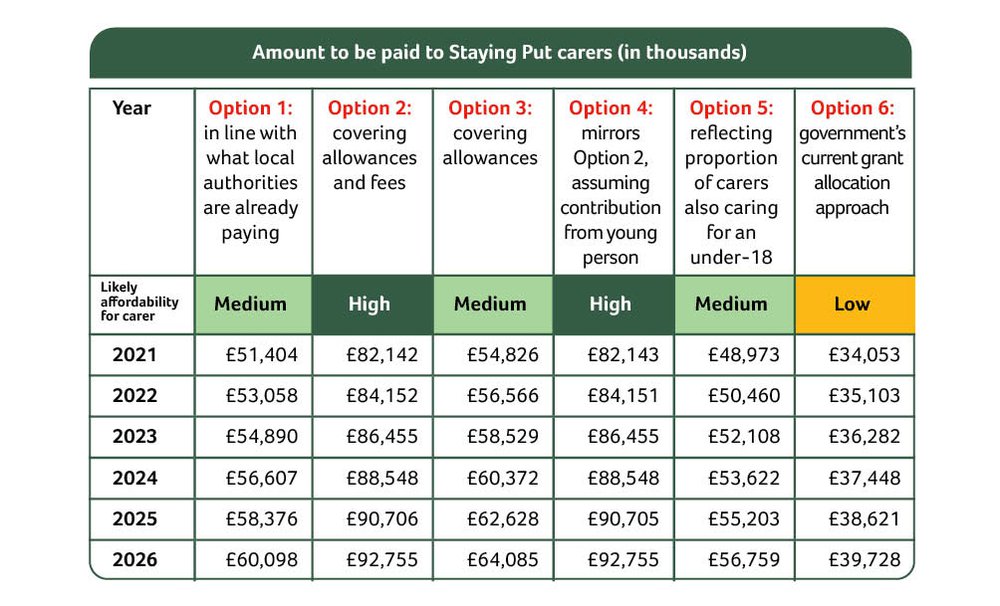Staying Put six years on: young people still being forced to leave their foster families before they’re ready

Children who have had the worst start to life are in danger of getting the worst possible start to their adult lives
A new Action for Children report reveals that the policy designed to allow care leavers to remain with their foster families – Staying Put – is being hampered by a lack of funding which means opportunities for young people to stay are being lost.
In 2014, the government introduced Staying Put. It empowered young people in foster care to continue to live with their carers up until the age of 21. It meant they didn't have to move out at the age of 18, when they left care.
But six years on, it looks like not all young people who want to stay put can. Research has found that many young people still have to move out of home before they are ready. And funding is the key issue.
Our new report shows that there will be a difference of £15.8 million – rising to more than £18.5 million – between what cash-strapped local authorities are likely to be paying their carers and the government funding local authorities receive for this. And that’s only if the government continues to fund Staying Put at current levels. There’s an even greater difference between the present funding levels and what we estimate is needed to comprehensively cover the costs of Staying Put.
The government has to provide adequate funding to make sure all young people leaving foster care can benefit from the safety and stability that Staying Put offers – particularly now, with the future looking so grim for youth unemployment.
We know that care leavers are at higher risk of becoming homeless than other young people. Approximately 39% of care leavers aged 19, 20 and 21 in England are not in education, employment and training. This is in comparison to 11% of all young people in the UK. And youth unemployment is only rising in the wake of the coronavirus crisis.
Staying Put can help. Young people are able to benefit from a loving and nurturing family environment for longer, giving them time to prepare for independence. This in itself helps hugely when it comes to engaging with education and employment opportunities.
The evidence from the pilots is that young people who stayed put were twice as likely to be in full time education at 19 than those who did not.
The government has been providing local authorities with dedicated funding for Staying Put. Last year, £33 million was set aside for the policy. This was a welcome boost from the almost £22 million in funding granted the year before. But the future of Staying Put funding beyond 2021/22 is still unaccounted for.
We spoke to five different local authorities to find out more. We wanted to know how much Staying Put actually costs, and what the money goes towards.
The bulk of the funding appears to go on payments for foster carers. This is to make sure that offering Staying Put to the young people who need it is affordable. But local authorities made it clear that the funding available to them wasn't enough.
Following these conversations, we were able to model some different funding approaches. To do this, we also used a survey of local authorities by The Fostering Network. This was to find out how much local authorities were currently spending on Staying Put. We projected these approaches forward into 2026. We are urging the government to consider them in order to comprehensively cover the costs of Staying Put.

Amount to be paid to Staying Put carers (in thousands)
We would welcome a guarantee that the government will continue to support local authorities through the Department for Education implementation grant at its current level (Option 6 in the table). However, we know that carers can still struggle to offer Staying Put arrangements even with the level of funding available right now. Our alternative options, set out in the table above, would cover the costs of Staying Put much more effectively - and make it far more affordable for carers.
Our Option 2 would enable carers to receive both an allowance and a fee payment that recognises their skills and expertise. It offers us the best assurance of affordability for carers, and, by extension, the best assurance that all young people in foster care will be able to benefit from the nurturing family environment that Staying Put offers.
And this is crucial. Turning 18 already marks a particularly challenging, uncertain and disruptive time for young people, especially those who are care experienced. But in the middle of a pandemic, some of the effects of which are being most harshly felt by the young, Staying Put is more important now than ever.
Read our report , made possible by our partnership with CBRE.
